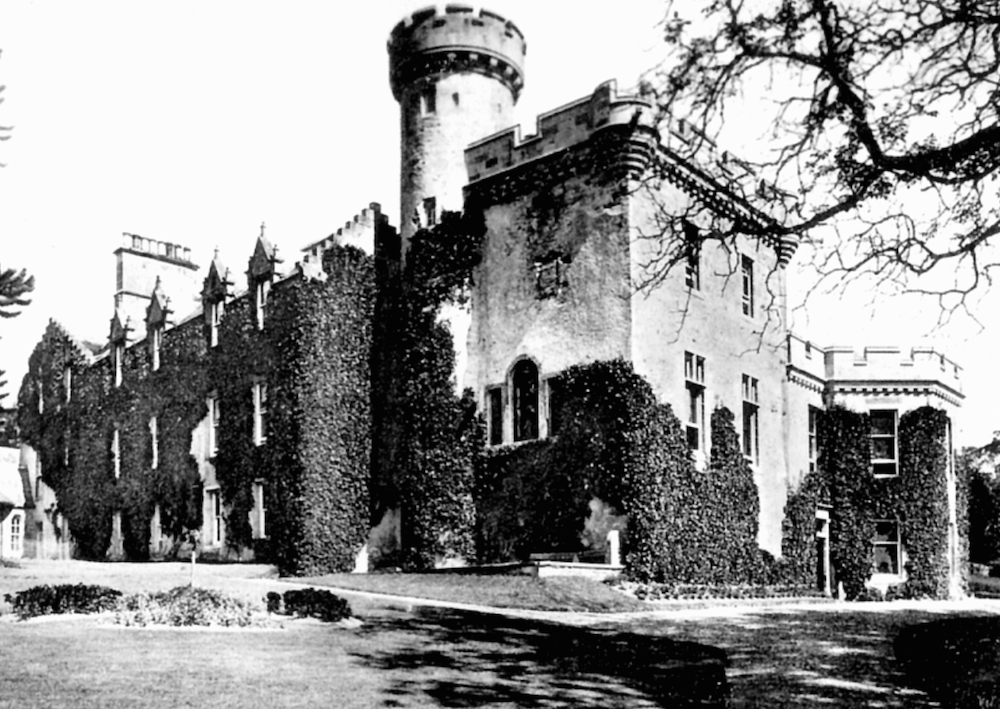
Close

Built: 1542
The castle’s fortunes have changed many times over the course of its rich history. In the 12th century, it is believed that Norsemen may have built Tulloch Castle. However, the first recorded ownership of the castle can be traced to the Bayne family in the 16th century, before the castle was inherited by the Davidson family, for which Tulloch Castle is known as the legendary birthplace of Clan Davidson. Today, the castle retains many of its original features, including the ancient Dungeon, beautiful stained glass windows, an ornate staircase, the 250-year old panelled Great Hall, and a secret tunnel from the basement of the Castle across town to the ancient Dingwall Castle.

Duncan Bayne – Born in Dingwall, Scotland in 1489 and Died in Highland, Scotland in 1559
John Alexander Bain, 2nd Laird of Tulloch – Born in Beauly, Scotland in 1515 and Died in 1596
Duncan Bane III, Lord Tulloch – Born in Scotland in 1559 and Died in 1623
Donald Bayne – Husband of Margaret Tulloch, Annabella Mackenzie and Marie Dingwall
Henry Davidson – Born circa 1726 and Died in 1781
Duncan Davidson – Born in 1800 and Died in 1881
Duncan Henry Caithness Reay Davidson – Born in 1836 and Died in 1889
Agnus Douglas Vickers – Born in London, England in 1904 and Died in Lisbon, Portugal in 1990
Located in the town of Dingwall in the Highlands of Scotland, Tulloch Castle stands proudly on the southern slopes of Tulloch Hill, which has been a centre of habitation for thousands of years. With an incredible heritage, it is thought that the original structure of the castle was built by Norseman in the 1200s, during a period of time when this area was under the influence of the Vikings.
Despite chronicled historic roots, Tulloch Castle doesn’t appear on any maps of the Highlands until the 18th century, and the earliest documented ownership of the castle can be traced back to the Bayne family of the 16th century, who took on ownership of the property in 1513. The family’s residency at the castle came to a sad end when the estate declared bankruptcy and Kenneth Bayne, the 8th Laird of Tulloch, sold the castle to his cousin, Henry Davidson, a London West India merchant, for £10,500.
This exchange marked the beginning of the Davidson family’s successive ownership of Tulloch Castle that would last until the early 20th century. Home to six Davidson lairds, each generation played a significant role in the local society, as well as the continual development of their castle and grounds. The 4th laird, Duncan Davidson, was elected as an MP for Cromarty and was greatly admired by none other than Queen Victoria; however, this particular gentleman also garnered a dubious reputation, being married five times and fathering eighteen children, as well as – allegedly – at least thirty illegitimate children. Another member of the family, Elizabeth, has a rather more ghoulish legacy, as she is said to have fallen down the stairs to her death while running away from seeing her father with another woman. Her ghost, known as the Green Lady, is thought to haunt the castle to this day.
Following the outbreak of the Second World War, Tulloch Castle was used as a hospital for casualties from the evacuation of Dunkirk, before being used as a dormitory for Dingwall Academy to house female students from the west coast of Scotland. At this point, the almost 800-year-old building was at risk of falling into disrepair towards the end of the 20th century until it was purchased and lovingly restored by Ken and Margaret Macaulay.
New ownership brought about a new lease of life for Tulloch Castle, and its reinvention as a hotel has been a marvellous success. With a Clan Davidson museum and family cemetery located within the grounds, as well as an abundance of original features such as a vaulted dungeon, Tulloch Castle embraces its history while providing modern comforts, contemporary interiors, and a warm Scottish welcome to all guests.